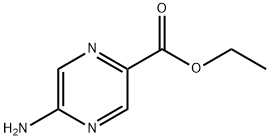How does dynamic interface printing, the new 3D printing method developed by David Collins and his colleagues at the University of Melbourne, revolutionize the traditional 3D printing process? In what specific ways does the use of acoustic modulation and a confined air - liquid boundary enable it to print centimeter - scale 3D structures in just tens of seconds? How does its ability to perform multi - material printing and handle complex geometries open up new possibilities in fields like bioprinting? And what are the potential long - term impacts of this technology on personalized medicine and drug testing?
3D Bioprinting Breakthrough: How Close Are We to Printing Functional Human Organs?
Related Products More >
-
- 509-15-9
- equest For Quotation
- 25kg/drum
-
- 509-15-9
- equest For Quotation
-
- equest For Quotation
- 2mg



 沪ICP备2021018848号-5
沪ICP备2021018848号-5

The new printer is basically a pressurized hollow tube. When it's put into resin liquid, air pressure creates an interface between the tube's open end and the resin. When the resin gets exposed to light, it hardens. By projecting the object's cross - sections onto this interface one by one, the printer builds a 3D structure. And here's the really neat part: speakers vibrate the interface, creating waves that speed up the hardening process. That's why it's way faster than other resin 3D printers. It can print 0.7 millimeters of structure per second, compared to the previous record of 0.14 millimeters per second!
How does it handle complex shapes? Since the printed object floats in the resin as it's being made, it can deal with all kinds of complex structures. And the resolution is amazing – 15 microns. They've already printed stuff that's 3 centimeters in diameter and 7 centimeters long. That means they can print structures at the single - cell level!
What about multi - material printing? Because the printing interface is breathable instead of solid, it can print different materials one after another. You could print bone tissue first, then tendons, and then skin.
As for its impact on bioprinting and medicine, it's huge! One of the first uses might be to take tissue samples from patients and print customized, functional tissue models. Someday, doctors might be able to quickly print multiple sets of functional 3D kidneys using this tech. Then they could run a bunch of drug tests to figure out which drugs work best. It's like something out of a sci - fi movie, but it's real!
Here’s the game-changer:
Speed demon mode: Uses sound waves (yep, speakers!) to vibrate the resin-liquid boundary, making it solidify 5x faster than the fastest resin printers (0.7mm/sec vs. 0.14mm). Print a centimeter-scale object in seconds, not hours.
No more "stuck to the plate" drama: The printed object floats in resin as it forms, so you can print crazy-complex shapes (like blood vessel networks) without breaking them.
Multi-material magic: The air-liquid interface lets you swap materials mid-print. Imagine printing bone and skin in one go—perfect for bioprinting hybrid tissues.
Soft as jelly: Can print ultra-soft materials (softer than current tech allows), ideal for mimicking squishy human tissues.
Why it matters for medicine?
Today: Print custom tissue models from a patient’s own cells to test drugs (goodbye, guinea pigs!).
Tomorrow: Maybe print a batch of mini-kidneys overnight, try 10 drugs on them, and pick the best one for the patient. Personalized medicine on turbo mode.
Bottom line: This isn’t just "faster printing"—it’s a whole new toolbox for bioprinting and beyond.